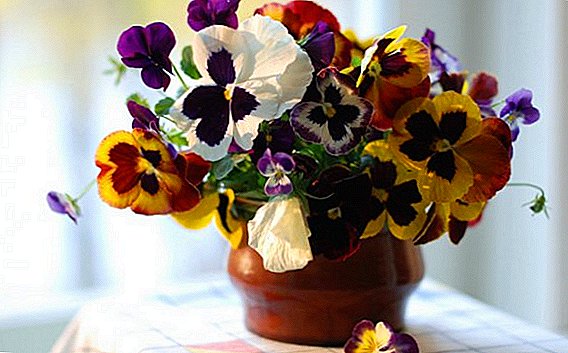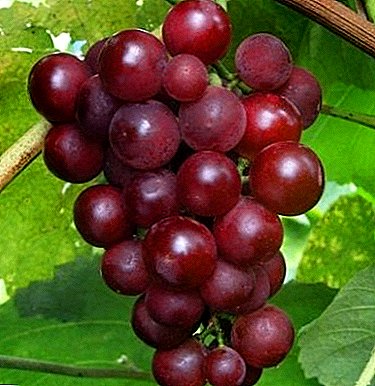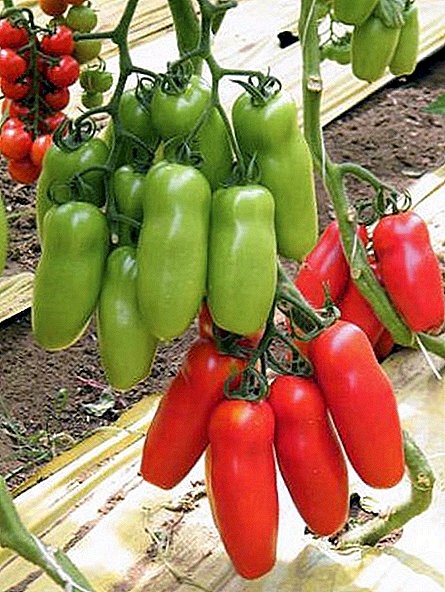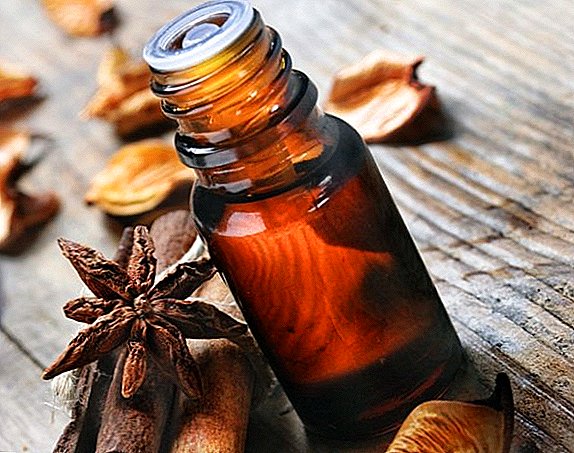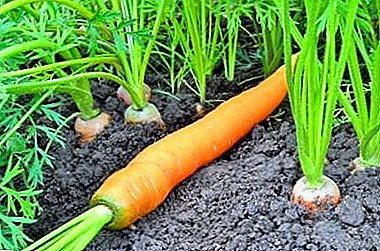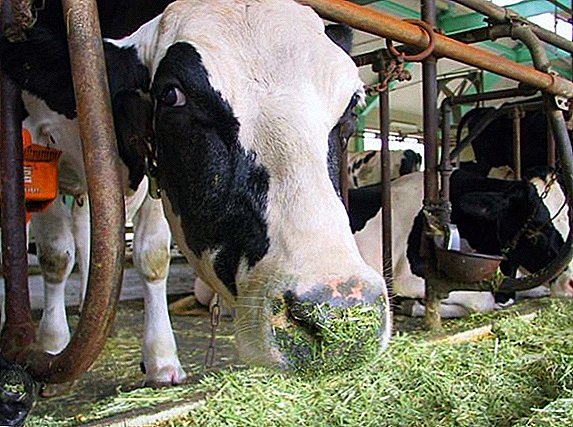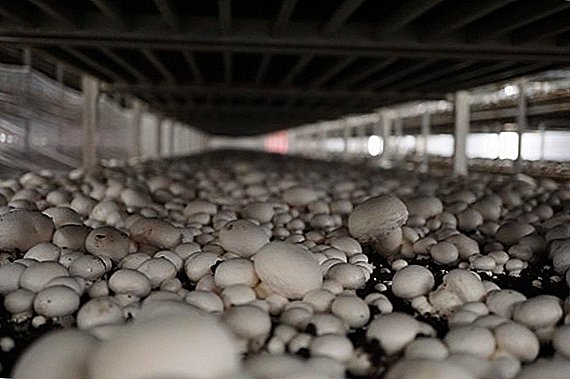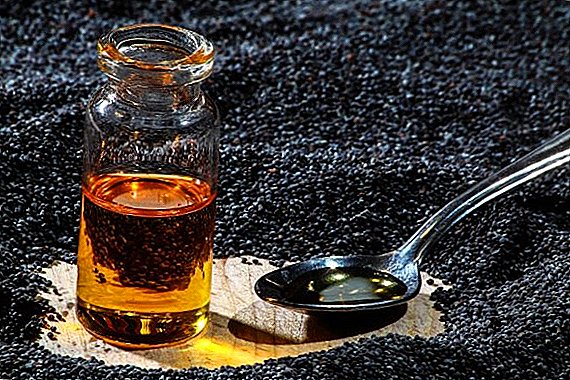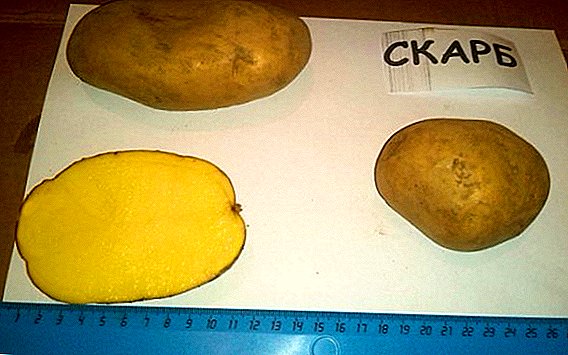 Many wonder about the choice of varieties of potatoes before planting, some stop at such a way as "Skarb". But in order to get a good harvest, you need to know how to properly care for such vegetables in the process of their growth - consider the features of this process in the article.
Many wonder about the choice of varieties of potatoes before planting, some stop at such a way as "Skarb". But in order to get a good harvest, you need to know how to properly care for such vegetables in the process of their growth - consider the features of this process in the article.
Inference history
The species receives official recognition when it enters the state register of vegetable varieties. For the first time, the variety Skarb was in such a list in 1997 in the Republic of Belarus in all regions. Also in 2002, it was added to the list of varieties of the Russian Federation, but only in some regions: Northern, Ural, Central, Volgo-Vyatsky. The variety was discovered in the National Center for Horticulture of the Republic of Belarus. The scientists who created this potato are LI Pishchenko, N. P. Yashchenko, Z. A. Semenova, and others. 
Botanical description of tubers
Standard tubers have a yellow-golden peel and an oval or slightly oblong round shape. Like the rind, the flesh has a yellow tint. The eyes are not deep, almost on the surface, have a small size, the number may be different.
Did you know? The French agronomist A. Parmentier used a psychological device to instill confidence in people in potatoes: he set harvest guards for the day, and at night people came to try what was under such careful supervision.
It is believed that "Skarb" is one of the best types of potatoes in taste: a little sweet taste, lack of bitterness, so it is great for a separate dish, and in salads or in the form of chips.
The weight of tubers can vary, but the usual indicators are 150-250 grams, it can be said that in comparison with other species it is rather small.
Characteristic variety
Before planting, it is necessary to familiarize yourself with the detailed characteristic of the variety. 
Disease resistance
In general, we can say about the high level of resistance of potatoes to diseases.
Unlike other species, uncharacteristic for him is to hurt:
- potato cancer;
- black leg;
- wet rot;
- wrinkled mosaic;
- banded mosaic.
These diseases are one of the most common for other species, and blight, both of tubers and leaves, is particularly strong on Skarb. It manifests itself in the form of a fungus that covers the tops of the red spots, and in rainy weather is transferred to other nearby plants.
Terms of ripening
Potatoes "Skarb" refer to average or medium late in terms of ripening in comparison with other types of potatoes, the period is approximately 80-95 days after the first germination.
The varieties of medium and medium-late maturity are "Nevsky", "Rocco", "Blue", "Zhuravinka", "Melody", "Lorch", "Lasok", "Aladdin".
Yield
High yield is one of the main reasons for the popularity of this vegetable. With 1 hectare of land with proper care, you can get about 600 centners of fruit, or 60,000 kg. 
Stickiness
Vegetable longevity is also quite high: it retains its taste, does not lose vitamins and minerals, does not decrease in weight and is not amenable to most diseases. Under the right conditions of storage, tubers collected last year can be stored until September.
Growing regions
Recommended for cultivation in the regions of the Republic of Belarus, Ukraine, Moldova and the Northern, Ural, Central, Volga-Vyatka regions of the Russian Federation.
Landing rules
To get a great harvest, you need to know all the features and rules of planting varieties of potatoes "Skarb".
Optimal timing
One of the features is that it is planted only in heated soil: the minimum temperature should be + 10 ° C. The same temperature should be maintained at a depth of 10-12 cm. This effect can be achieved at a temperature of + 20-25 ° С. There are no clear calendar days for landing, since it is necessary to focus primarily on temperature, but usually the landing begins in mid-May. 
Choosing a place
The landing site must have these characteristics.: dry, relatively flat surface and plenty of sunshine. The soil should be fertile, medium or low acidity - this can be determined by the plants (coltsfoot, plantain, clover).
Humidity of the soil is also very important: plant potatoes in the "dirt" is not recommended, because it simply does not take root, it is necessary to take into account the presence of groundwater, which can create poor conditions for harvest.
To increase the harvest of potatoes on the site will help siderats - green fertilizers: tributary, lupine, alfalfa, canola, mustard, phacelia, rye, oats.
Good and bad predecessors
Planting from year to year in the same place often leads to negative consequences for the harvest, because the soil is depleted, and any diseases remain and again affect the vegetables, and may spread.
Important! You should not plant potatoes on the spot where they grew tomatoes: this will lead to a small crop!
Of course, the ideal option is to land in the "rested" land or the one that was sown with herbs or spices. 
Soil preparation
Preparing the soil for planting Skarb potatoes is almost the same as preparing the ground for any other species. In early autumn, you need to dig the soil and, if desired, improve it with organic fertilizers. After that, already at the beginning of spring, you need to re-dig the soil and apply fertilizer, this time mineral.
Preparation of planting material
The tubers themselves before planting require more careful processing. Since they are hard enough to germinate, it is necessary to warm them up in the sun two days before planting, and also to carry out the germination process. The sprouts that are formed should not exceed 3.5 cm. Also, the peculiarity is that they do not recover after damage, so you should pay attention to the integrity of the tuber and its elements.
Many gardeners when planting crops, including potatoes, are guided by the lunar calendar.
Scheme and depth of landing
Landing is carried out using 35 cm to 60 cm - this is the system of the location of the holes The depth of landing should be 5 to 10 cm, but not deeper, because otherwise they will not receive a sufficient amount of light. Each hole should be fertilized with mineral fertilizers or ash, humus. Tubers used for planting should be medium in size with a large number of germination.
How to care
After planting, close attention should be paid to the care of the future crop, because it has a number of features.
Watering
Intensive watering is very important for this variety: in dry and hot weather, it must be done every 4-5 days as the ground dries, in cloudy and rainy weather - every 10 days. A few weeks before the start of picking potatoes, watering should stop. 
Top dressing
Fertilizers are necessary at each stage of cultivation: before planting organic fertilizers, it is recommended to cultivate the soil in the fall, to make mineral fertilization in the spring, and directly during planting some ash or humus to be added to each well.
Important! Poor chemical fertilizer can only spoil the crop, and not help his germinate.
The amount of fertilizer depends on the area of planting and the manufacturer of feeding.
Weeding and loosening the land
Weeding is recommended 2-3 times for the entire aging period in dry and hot weather: this will cause the weeds to dry together with the roots and, thus, will not germinate again. Loosening the land is also desirable to spend 2-3 times, but already during wet weather or after rain, then the earth will be better to work.
Hilling
Hilling is the process of sprinkling loose, fresh soil on the bottom of a shrub. This procedure helps to increase the yield level by more than 20%. It is recommended not to spend it in sunny weather, early in the morning or in the evening.  Hilling should be done 3 times during germination:
Hilling should be done 3 times during germination:
- during flowering;
- with a height of seedlings more than 10 cm;
- to sprouted bushes after heavy rain.
This procedure provides additional growth and increases the level of moisture and nutrients.
The hilling process is quite time consuming and time consuming. To save time and effort potatoes spud motoblock.
Preventive treatment
First of all, you need to pay attention to the appearance of the vegetables: if any signs of disease are visible (plaque, rot, brown spots), then you must immediately remove the infected crop, until the infection spread to all plants. Collected affected parts must be burned to completely destroy the disease. 
The use of chemicals is not recommended, because it can protect the crop, but spoil the taste of the potato and its nutritional properties. If necessary, you can use insecticides and use manual collection of pests.
The most famous and frequent potato pest is the Colorado potato beetle. Learn how to deal with it using traditional methods (mustard and vinegar) and the preparations: Prestige, Tabu, Regent, Konfidor, Tanrek, On the spot, Komandor, and Lightning.
Harvesting and storage
Two weeks before harvesting, stop watering and cut the tops. It is recommended to dig a vegetable in good, warm weather so that it can be dried before storage. If there are damaged or cut potatoes when digging, they should be set aside separately.
The first 2-3 weeks harvest should be in a dry, warm place for the final maturation.  Later it is better to lay down in the cellar or any other convenient place. Potatoes for planting next year should be stored separately.
Later it is better to lay down in the cellar or any other convenient place. Potatoes for planting next year should be stored separately.
Learn more about the storage conditions of potatoes, in particular, in the apartment.
Advantages and disadvantages
Like any kind of plant, "Skarb" has both a number of minuses and a number of advantages.
Positive qualities include:
- high level of keeping quality of tubers;
- high yield;
- rich taste;
- a large number of nutrients;
- beautiful, "commodity" appearance;
- resistance to low temperatures;
- high resistance to various diseases.
 Negatives are:
Negatives are:
- late blight instability;
- first seedlings appear difficult;
- Care is needed.
But with care that meets all standards, the first two drawbacks can be avoided.
Reviews gardeners about potato "Skarb"

This potato is still different in that it is very well stored. His eyes start to wake up late. Seed material, unlike other varieties, have to get out of the cold store early. I usually bring it to a warm place in late March or early April.

Although the variety has a very high marketability and yield, there are very high yields on unwettered land. In villages and collective farms occupies about 1/3 of the area

Thus, we can conclude that the Skarb potato has excellent taste and immunity, and when planted and grown, it is not much different from other species. But there are features: the need for a large amount of light, fertilizer, warming the soil.



